Renting an apartment or flat? Who says you have no option but those poorly built, ugly storage systems from stores? This industrial-design shelving system is a way better alternative!
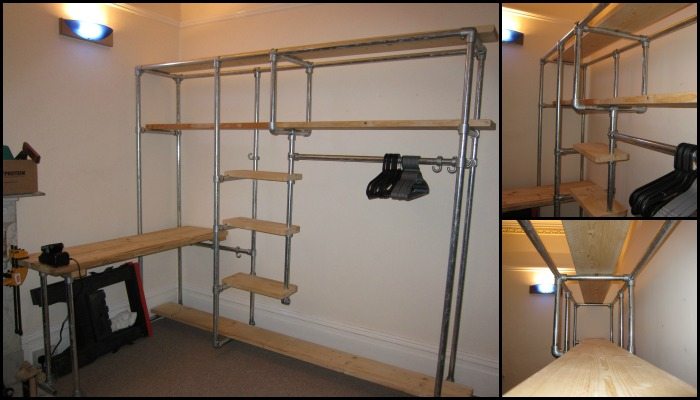
While people often overlook the importance of good storage systems when hunting for an apartment, they are a core necessity for an organized life. A rapidly industrialized world coupled with a myriad of technological advances means we often have to contend with less space on one hand and higher accessibility to items on the other.
That’s why keeping our living and workspaces tidy and neatly organized amid a pile of belongings can be a problem. Good storage solutions provide a way out of this quagmire.
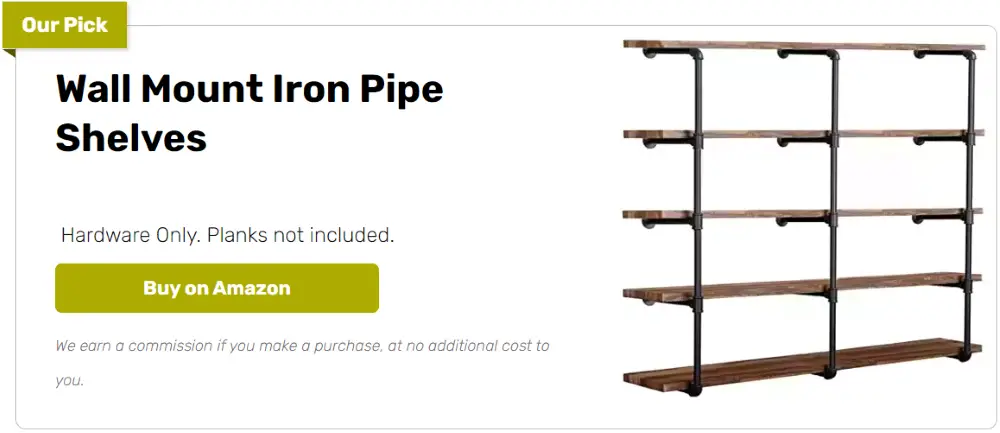
This DIY scaffold storage system is very easy to build, anybody can do it. It is also modular, which means you can always modify or add shelves when the need arises. And because it uses scaffolding tubing, you can rely on this storage system’s strength and stability.
We also love that this shelving doesn’t make a room look cramped as much as a common shelf/storage does. Most renters only have a very small space to work with, and a system like this is perfect since it is not an overwhelming piece of furniture.
Of course, it is also quick and easy to disassemble when it’s time to move out!
What’s not to love about this beautiful scaffold storage system?
Contents
Advantages of Building an Efficient Scaffold Storage System
1. Maximizing Efficiency
Streamlined Operations: Efficient scaffold storage ensures that all components are organized and easily accessible. By categorizing and storing components based on type, size, or frequency of use, workers can quickly locate and retrieve the materials they need, minimizing downtime and maximizing productivity.
Improved Workflow: A well-designed storage layout optimizes workflow on the job site. By strategically positioning storage areas near the work zones, workers can minimize travel time between the storage area and the work area. This reduces idle time and improves overall project efficiency, allowing workers to focus more on their tasks.
Reduced Material Handling: Efficient scaffold storage eliminates the need for excessive material handling, reducing the risk of accidents and injuries associated with manual lifting and carrying of heavy components. By providing designated storage areas for different types of materials, workers can retrieve items with ease and minimize strain on their bodies.
Inventory Management: Effective inventory management is crucial for keeping construction projects on track and within budget. An efficient scaffold storage system allows project managers to track stock levels, monitor usage rates, and reorder materials as needed. This prevents shortages or overstocking, ensuring that the project stays on schedule and within budget.
2. Enhancing Safety
Hazard Reduction: An efficient scaffold storage system helps reduce the risk of accidents and injuries by keeping the work site organized and free of clutter. By providing designated storage areas for different types of materials, workers can avoid tripping hazards and potential accidents caused by improperly stored equipment.
Proper Storage: Properly storing scaffold components helps prevent damage and deterioration, ensuring that the equipment remains safe and reliable to use. By providing secure storage solutions, workers can avoid stacking materials haphazardly or leaving them exposed to the elements, prolonging their lifespan and reducing the risk of accidents caused by faulty equipment.
Compliance: An efficient scaffold storage system can help construction companies comply with safety regulations and industry standards. By implementing proper storage practices and procedures, companies demonstrate their commitment to safety and minimize the risk of fines or penalties for non-compliance. This not only protects workers but also helps maintain the company’s reputation and credibility within the industry.
Emergency Preparedness: In the event of an emergency such as a fire or natural disaster, an efficient scaffold storage system can help expedite evacuation procedures and ensure the safety of workers. By keeping storage areas organized and free of clutter, emergency responders can quickly access the site and assist as needed, reducing the risk of injury or loss of life.
Maximizing Your DIY Scaffold Storage System
Efficiency and organization are crucial elements in any construction project. Proper storage of scaffold components not only ensures a smooth workflow but also enhances safety on the job site. Building your own scaffold storage system offers an opportunity to maximize efficiency and optimize your workspace. In this guide, explore how you can make the most of your DIY scaffold storage system.
Designing Your Storage System
Assessing Your Needs
Before you begin building your scaffold storage system, take some time to assess your needs. Consider the types and quantities of scaffold components you’ll be storing, as well as the available space on your construction site. This will help you determine the size and layout of your storage system.
Planning the Layout
Once you have a clear understanding of your needs, it’s time to plan the layout of your storage system. Consider factors such as accessibility, workflow, and safety when designing the layout. Ensure that storage areas are conveniently located near the work zones to minimize travel time for workers.
Customizing the Design
One of the advantages of building your own scaffold storage system is the ability to customize the design to fit your specific requirements. Consider incorporating features such as adjustable shelves, hooks, and compartments to maximize storage space and efficiency.
Building Your DIY Scaffold Storage System
Utilizing Vertical Space
To maximize storage space in your scaffold storage system, utilize vertical space by installing tall shelves or racks. Consider adding hooks or hangers for hanging smaller items such as tools or safety gear. This allows you to make the most of the available space and keep your workspace organized.
Implementing Efficient Organization
Efficient organization is key to maximizing the effectiveness of your scaffold storage system. Categorize and store scaffold components based on type, size, or frequency of use to facilitate easy retrieval. Consider labelling shelves or compartments to help workers quickly locate the materials they need.
Regular Maintenance
To ensure your scaffold storage system remains in good condition and continues to function effectively, perform regular maintenance. Keep the system clean and free of debris, inspect it regularly for signs of wear or damage, and make any necessary repairs or replacements as needed.
By carefully planning the design and construction of your storage system and implementing efficient organization and maintenance practices, you can create a workspace that maximizes productivity and minimizes downtime.
So why settle for off-the-shelf storage solutions when you can build a customized system that’s tailored to your specific needs? With a little effort and creativity, you can create a scaffold storage system that enhances efficiency and helps you get the job done right.
Learn how to make it now!
How to Make a DIY Scaffold Storage System
Materials:
- Scaffolding Tubing
- Wood Planks
Tools:
- Hacksaw
- Saw
- Allen Keys
- Sandpaper/ Varnish
- Spirit Level
- Measuring Tape








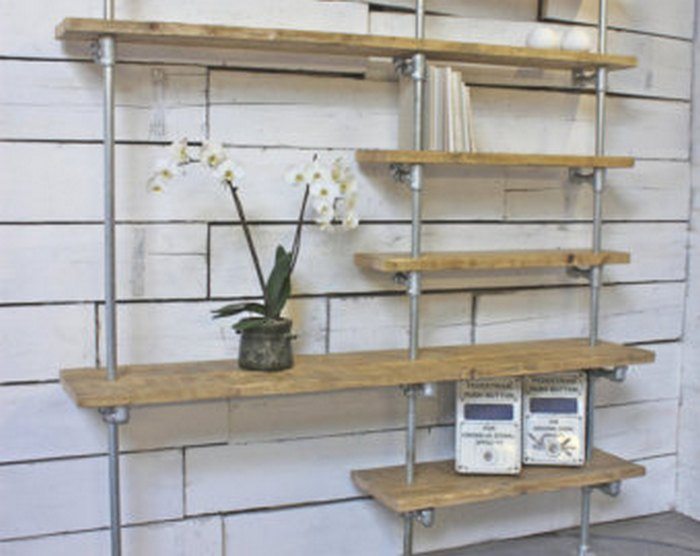
Steps:
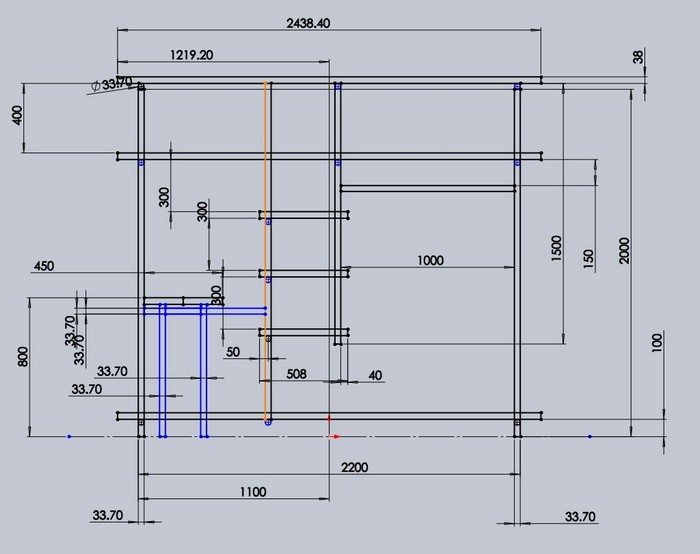
Step 1
The design: I wanted this to be able to store the majority of my things so set about designing a unit that would have sections to accommodate clothes, sports/hobby stuff, and tools. I also added a small desk/workbench for future projects.
I started by doing a simple sketch, keeping in mind the standard lengths I could purchase the scaffolding tubing and planks in to minimize waste material.
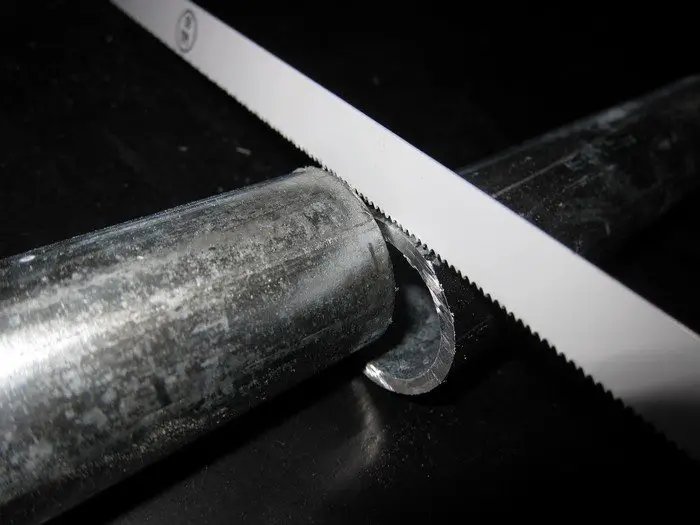
This scaffold storage system project is very simple to do, only taking a day or two together. First, cut the tubing to length with a hacksaw.
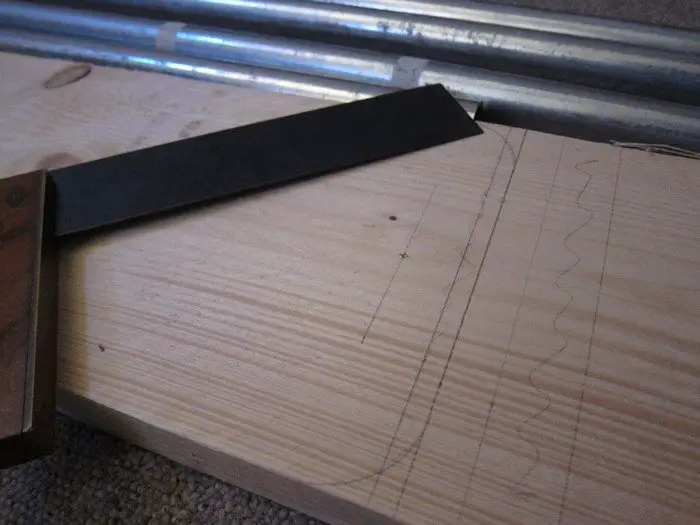
Measure out any shelves that aren’t ‘off the shelve’ lengths.
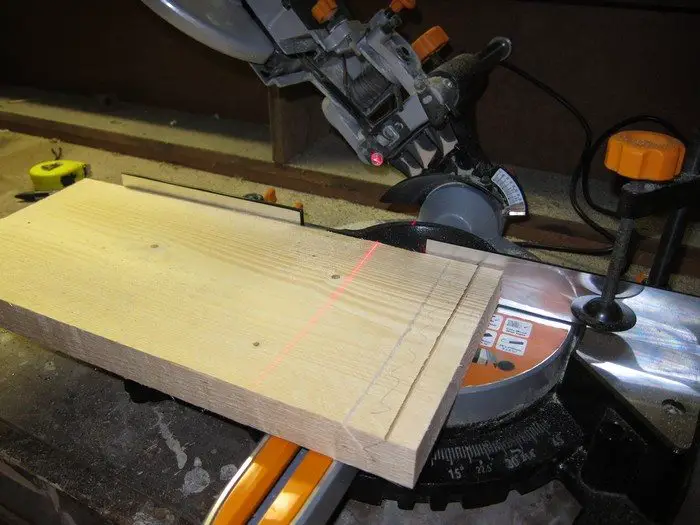
Cut the planks with a saw.
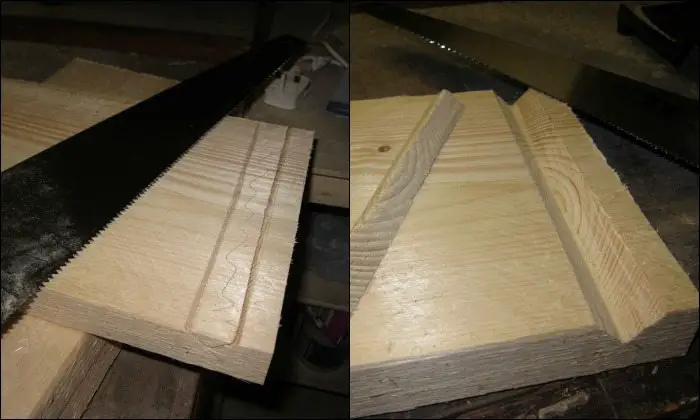
(Optional) I cut V-groves into the small shelves to help them locate on the cross tubes. I set my miter saw to a 45° bevel, engaged the depth stop, and cut. And then finished the cut with a hand saw.

Sand and finish in your choice of vanish/stains/oils etc.
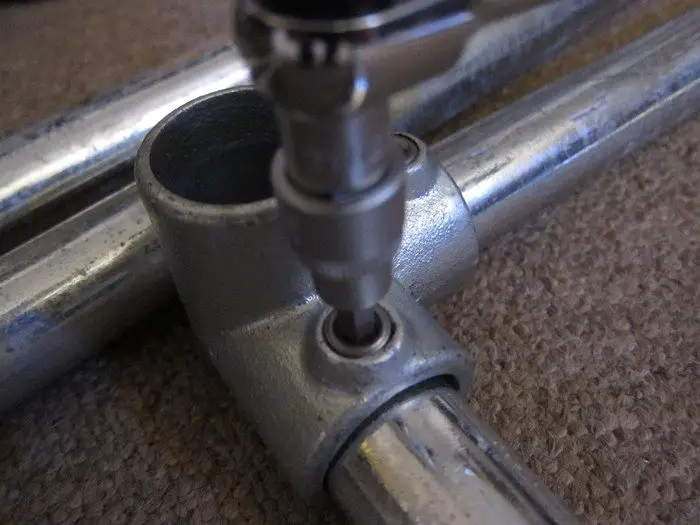
Step 2
Assembly: With everything cut, it’s time to assemble. The clamps simply tighten together with an Allen key, so the whole unit goes up very quickly!
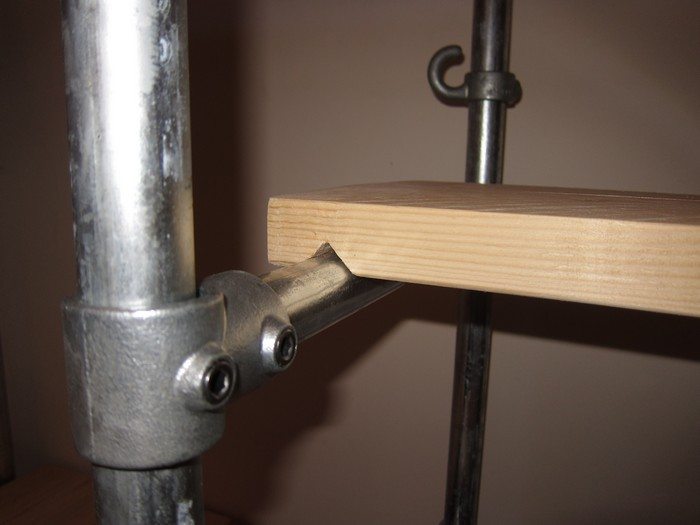
I just sat the planks on the crossbars without fixing them which works perfectly well. You could also drill some holes and bolt them down…

Finished and ready to fill with your stuff!!
Cheers for looking.
Thanks to barclay5426 for this wonderful project!
The Wrap Up
Building an efficient scaffold storage system in just two basic steps is a transformative endeavour for any construction project. Throughout this journey, we’ve explored the myriad benefits and strategies involved in maximizing the effectiveness of such a system. Let’s recap the key points and reflect on the significance of this process.
Firstly, the advantages of an efficient scaffold storage system cannot be overstated. From streamlining operations to enhancing safety, the benefits permeate every aspect of the construction site. By categorizing, organizing, and optimizing the storag.e of scaffold components, workers can significantly reduce downtime, increase productivity, and minimize the risk of accidents or injuries.
The first step in building an efficient scaffold storage system lies in designing the layout. This involves assessing the needs of the project, planning the layout, and customizing the design to fit specific requirements. By carefully considering factors such as accessibility, workflow, and safety, construction professionals can create a storage system that maximizes space utilization and facilitates efficient organization.
Once the design phase is complete, the second step is to construct the storage system. This involves gathering the necessary materials and tools, following proper construction techniques, and ensuring stability and durability. By adhering to best practices in construction, workers can create a storage system that not only meets their immediate needs but also withstands the rigours of daily use.
Throughout the process, it’s important to focus on maximizing the potential of the scaffold storage system. This can be achieved by utilizing vertical space, implementing efficient organization strategies, and conducting regular maintenance to ensure longevity and functionality. By continually optimizing and refining the system, construction professionals can create a workspace that is both efficient and effective.
In the grand scheme of things, building an efficient scaffold storage system in two basic steps is more than just a practical endeavour—it’s a testament to the ingenuity and resourcefulness of those involved in the construction industry. It’s a commitment to excellence, a dedication to safety, and a recognition of the importance of organization and efficiency in achieving project success.
As we conclude this exploration, it’s clear that the benefits of an efficient scaffold storage system extend far beyond the confines of the construction site. They ripple through the entire project, impacting everything from productivity and safety to budget and timeline. By investing time and effort into building and optimizing a storage system, construction professionals can lay the foundation for success and ensure that every aspect of the project is executed with precision and care.
In essence, building an efficient scaffold storage system in two basic steps is not just about creating a place to store materials—it’s about creating a workspace that empowers workers, enhances productivity, and facilitates success. It’s about recognizing the importance of organization and efficiency in achieving project goals, and it’s about taking pride in the workmanship and attention to detail that goes into every aspect of the construction process.
So as we look ahead to future projects and endeavors, let us remember the lessons learned from this journey. Let us continue to strive for excellence, embrace innovation, and never underestimate the power of a well-designed and efficiently organized scaffold storage system. For in doing so, we pave the way for success, both now and in the years to come.
Frequently Asked Questions
1. Why should you build your own scaffold storage system?
Building your own scaffold storage system allows you to customize it to suit your specific needs and preferences. You can design the system to fit the available space, accommodate the types of scaffold components you use, and incorporate features that enhance efficiency and safety on your construction site.
Safety is paramount on any construction site, and your scaffold storage system plays a crucial role in maintaining a safe working environment. By customizing the system, you can implement safety features such as secure locking mechanisms or barriers to prevent unauthorized access. Moreover, you can ensure that heavy or bulky components are stored securely to prevent accidents or injuries.
2. What materials do you need to build a scaffold storage system?
The materials you’ll need depend on the design and size of the storage system you plan to build. However, common materials for building a scaffold storage system include lumber, plywood, screws, brackets, and storage bins or containers. Be sure to choose materials that are durable and suitable for outdoor use if your storage system will be exposed to the elements.
3. How do you determine the size of the storage system you need?
Consider the amount of scaffold components you have and how much space you have available on your construction site. Measure the dimensions of the area where you plan to install the storage system and consider the height, width, and depth of the shelves or storage compartments needed to accommodate your materials.
4. Can you customize the design of your scaffold storage system?
Yes, one of the benefits of building your own scaffold storage system is the ability to customize the design to meet your specific requirements. You can choose the number and size of shelves or compartments, add features such as hooks or brackets for hanging tools, and incorporate options like wheels for mobility if needed.
5. How do you ensure your scaffold storage system is sturdy and stable?
To ensure your scaffold storage system is sturdy and stable, use quality materials and follow proper construction techniques. Use braces or supports to reinforce the structure and secure it to the ground or wall if necessary. Test the stability of the system once assembled to ensure it can safely support the weight of your scaffold components.
6. How can you maximize space in your scaffold storage system?
Maximizing space in your scaffold storage system involves efficient organization and storage solutions. Consider using adjustable shelves or modular storage units that can be reconfigured as needed to accommodate different sizes of scaffold components. Utilize vertical space by installing tall shelves or racks and consider adding hooks or hangers for hanging smaller items.
7. How do you maintain and care for your scaffold storage system?
Regular maintenance is essential to ensure your scaffold storage system remains in good condition and continues to function effectively. Keep the system clean and free of debris, inspect it regularly for signs of wear or damage, and make any necessary repairs or replacements as needed. Protect the system from exposure to moisture or extreme weather conditions to prevent rust or deterioration.
8. Can you disassemble and move your scaffold storage system if needed?
Yes, many DIY scaffold storage systems are designed to be easily disassembled and moved if necessary. Use screws or bolts instead of nails for assembly to allow for easier disassembly, and choose lightweight materials if portability is a priority. Be sure to label or mark the components for reassembly to ensure the system is put back together correctly.





